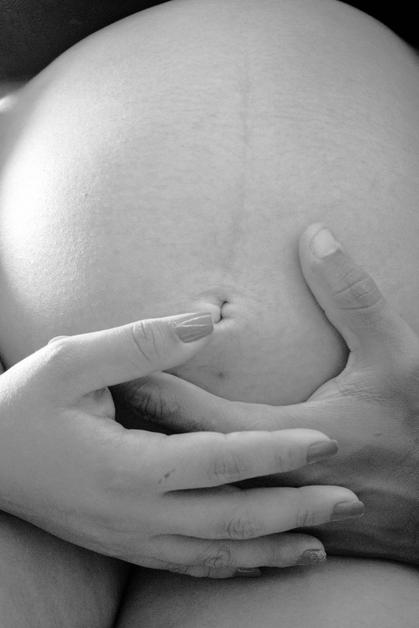The months of pregnancy can surprise even the most prepared parents with myriad sensations. One that recurrently raises concern is lower abdominal pain during pregnancy. A slight cramp, a pulling twinge, or a sudden sharp jab—these experiences are loaded with questions: Is everything progressing as expected? Should one worry or just stay calm? Here, one finds not just a mystery but a common thread, as many expecting parents in India (and worldwide) confront these abdominal sensations. What exactly is happening inside as your body adapts and transforms? Which pains are harmless and which sound a silent alarm? Health, comfort, and the safety of your growing baby are at stake—knowing how to interpret these signals makes all the difference. Get ready to explore: from physiological shifts to red-flag symptoms, from practical relief tips to when expert advice is non-negotiable, every aspect of lower abdominal pain during pregnancy will unfold.
Understanding lower abdominal pain during pregnancy: What really happens in the body?
Ticking along beneath the curves of a growing belly, lower abdominal pain during pregnancy frequently finds its origin in the orchestra of hormonal and anatomical changes choreographed by nature. The uterus expands much like a balloon slowly being blown up, tugging on the round ligaments—those rope-like supports—triggering what is aptly called round ligament pain. Often this comes as a fleeting, sharp pain, striking after a sneeze or a sudden movement. Momentary, dramatic, and sometimes surprising. Have you ever noticed a sudden jolt while changing position on the bed? That could be it.
Adding another layer, pregnancy hormones—especially progesterone—tend to quieten the digestive system. Result? Sluggish bowel movements, bloating and a constant companion called constipation. The lower abdomen starts to feel crowded as the uterus presses on intestines and the bladder, occasionally resulting in a dull, pressing ache.
But every coin has two sides. While mild, passing pains reassure you that your body is adjusting for baby’s growth, some sensations ask for caution. Severe intensity, persistence, or additional signs like bleeding, fever, or dizziness open a new chapter.
Benign sources: The most frequent causes
The physiological stretch: Round ligaments at work
Expansion is the key. As the uterus rises and stretches with your baby’s development, ligaments and surrounding tissues undergo tension. This adaptation process commonly causes lower abdominal pain during pregnancy and signals a healthy progression of pregnancy—unless pain is constant or disabling.
- Quick, sharp jabs with movement? Classic sign.
- Mostly on the sides or frontal lower abdomen? Expected pattern.
- Usually disappears with a little rest and gentle posture change.
There’s reassurance in knowing many parents note these sensations from the second trimester onwards, though some may feel them earlier.
Digestive adjustments: Gas and constipation
As food takes a lazy route through your bowels (thanks to hormones softening smooth muscles), symptoms like bloating or constipation make their entrance. Fibre-rich meals, ample hydration, and sometimes a light stroll after eating work wonders. Remember, these digestive issues typically cause mild to moderate cramping, but don’t usually come with other severe symptoms.
Braxton Hicks: The practice contractions
“Is this labour?” Many parents wonder as the uterus tightens and releases. Braxton Hicks contractions are simply ‘practice’—painless or mildly uncomfortable, erratic, and usually short-lived. They often intensify in the second half of pregnancy, but don’t progress in rhythm or strength. No need to worry, unless contractions become regular or grow more painful before 37 weeks.
Red flags: When vigilance becomes essential
Although most lower abdominal pain during pregnancy remains benign, a handful of symptoms suggest caution. Here’s what should never be dismissed:
Watch out for:
- Sudden, intense or unrelenting pain low in the belly
- Any vaginal bleeding
- Fever or chills
- Abnormal, foul-smelling vaginal discharge
- Pronounced swelling—especially of the face or hands (possible pre-eclampsia)
- Pain or burning sensation when passing urine, with or without fever
- Notable decrease in baby’s movement or kicks
- Persistent contractions or pressure in the pelvic area before 37 weeks
Each of these indicators could mark a more serious underlying concern, from a urinary tract infection to preterm labor, ectopic pregnancy, or even placental abruption (where the placenta detaches partway, a medical emergency). Acting promptly makes all the difference.
Lower abdominal pain across trimesters
Each stage of pregnancy can present its own signature twists and turns, literally and figuratively:
First trimester: Mild, crampy sensations are frequent—sometimes linked to the embryo nesting into the uterus (implantation). If these are brief and not accompanied by bleeding, they’re usually harmless. Yet, the spectre of miscarriage or ectopic pregnancy (a pregnancy outside the uterine cavity, often producing sharp, one-sided pain and bleeding) is most relevant in the first 12 weeks. Any pain plus bleeding deserves immediate evaluation.
Second trimester: Ligament stretching takes centre stage. Digestive issues like constipation may escalate. Braxton Hicks contractions may begin, but are low in intensity. UTIs become more likely—burning urination and lingering pain stand out as red flags.
Third trimester: Braxton Hicks gains presence. But, persistent pain combined with increasing pelvic pressure or altered vaginal discharge could signal preterm labor. Immediate evaluation is necessary if regular contractions or continuous lower abdominal pain manifest before 37 weeks—every day gained is precious for your baby’s lungs and organs.
Recognising patterns: Safe pain versus danger signs
How does one differentiate?
- Benign pain: Mild, intermittent, linked to position changes, improves with rest, not associated with dangerous symptoms. Round ligament tension or gas discomfort fit this bill.
- Worrisome pain: Persistent, escalating, or intense; may radiate to the back or shoulder, especially if tied to bleeding, chills, fever, or fainting spells. Urgent attention is warranted.
If there’s ever doubt, err on the side of caution—consulting your care provider as soon as possible is an act of parental protection.
Common diagnoses: Decoding the possibilities
Which scenarios might your provider consider? Here’s a snapshot in clinical language—but don’t worry, the
practical implications are always explained.
| Condition | Nature of Pain | Notable Features | What To Do |
|---|---|---|---|
| Round Ligament Pain | Sharp, brief, side/front | Movement triggered, no bleeding | Reassure, gentle stretches |
| Urinary Tract Infection | Crampy, persistent lower belly pain | Burning urination, urgency, sometimes fever | Early treatment needed |
| Ectopic Pregnancy | Severe, one side ± shoulder pain | Bleeding, dizziness, risk of shock | Emergency! Immediate care |
| Miscarriage | Moderate, often bilateral cramping | Vaginal bleeding, passage of tissue | Prompt evaluation |
| Preterm Labor | Rhythmic, contractions ± pelvic pressure | Before 37 weeks, possible discharge changes | Emergency! Hospital care |
| Placental Abruption | Sudden, constant, severe | Bleeding, uterine hardness, reduced fetal movements | Emergency |
| Appendicitis | Worsening pain, right lower abdomen | Nausea, vomiting, fever, tenderness | Surgical intervention |
Various shades of lower abdominal pain during pregnancy paint a pattern—context, associated symptoms, and timing together guide safe outcomes.
Risks and complications: Why vigilance matters
Untreated or persistent lower abdominal pain during pregnancy isn’t merely uncomfortable—it can quietly threaten mother and baby. The spectrum ranges from temporary discomfort and stress (sleep loss, reduced ability to work or move), to medical risks like:
- Miscarriage early in pregnancy
- Preterm birth (arrival before 37 completed weeks)
- Infections that can reach kidneys or even the bloodstream
- Placental abruption impacting baby’s supply of oxygen and nutrients
- Fetal growth restriction, or very rarely, stillbirth if complications persist
- Psychological distress, and in some rare cases, future fertility issues after severe emergencies
Prompt response and ongoing medical follow-up ensure these risks remain distant possibilities, rather than everyday realities.
Evaluation: What your doctor checks
Diagnosing the reason behind lower abdominal pain during pregnancy combines medical detective work with modern tools:
- Thorough discussion:
- When did the pain begin?
- How does it feel (sharp, dull, constant, crampy)?
- Is anything making it better or worse?
- Are there any extra symptoms—bleeding, fever, urination issues?
- Physical exam:
- Checking tenderness, response to gentle pressure, signs of infection, and fetal wellbeing.
- Useful tests (if needed):
- Urine test: To detect infection, measure protein or sugar.
- Blood tests: To identify inflammation, anemia, check for pregnancy hormone (hCG).
- Ultrasound: Essential for excluding ectopic pregnancy, checking the placenta, and monitoring the baby’s status.
- MRI scan: Deployed only when needed for detailed investigation—safe, without radiation.
No action is too small for the promise of optimal health.
Practical advice: How to manage and soothe mild pain
Day-to-day adjustments
- Rest and posture: Lie on your left. Hug a pillow under your bump at night. Shifting position can rapidly ease discomfort.
- Gentle activity: Short walks, slow stretching, or prenatal yoga maintain circulation, reducing muscle tension.
- Warmth: A lukewarm bath or a warm water bottle (ensure it’s just warm, not hot) wrapped in a towel placed gently on the lower belly offers quick relaxation.
Nutrition and fluids
- Increase dietary fibre through fruits, vegetables, and whole grains.
- Drink plenty of water—aim for 10–12 glasses daily, spaced throughout the day.
- Prefer smaller, light meals rather than heavy, spicy dishes which sometimes aggravate symptoms.
- Never hold back on urination—this helps prevent bladder infections. Opt for breathable, cotton underwear for added protection.
Medication
If medication is necessary, only use what your doctor has suggested. Typically, acetaminophen (paracetamol) is the first-line for relief. Avoid NSAIDs especially after the midpoint of pregnancy as these can sometimes affect fetal circulation.
Relaxation techniques
Moments of calm, such as slow breathing, gentle self-massage, or simply connecting with your baby, strengthen overall emotional balance. Reducing stress-related tension contributes directly to improved physical comfort.
When you should consult a professional
Hesitation serves no one where health is involved. Seek immediate help in scenarios like:
- Sudden, severe, or ongoing lower abdominal pain during pregnancy
- Bleeding from the vagina, even if mild
- Fever, chills, pain when urinating
- Unusual, foul vaginal discharge
- Light-headedness, near-fainting sensations, profound weakness
- Noticeable reduction in the baby’s usual movements
- Any contractions or pelvic pressure before your 37th week
Swift communication often leads to better outcomes—better safe than regretful.
Continuous care: How prenatal appointments protect you
Each prenatal visit builds a safety net through regular checkups: your provider monitors for warning signs, reassures when all is well, addresses doubts, and guides you at every milestone. Even the most minor question is valid—consistent observation is your best insurance for a thriving pregnancy.
Debunking myths and misconceptions: Pain does not always equal threat
There’s an enduring belief that any pain during pregnancy equates to something going wrong. Actually, most gentle or intermittent lower abdominal pain during pregnancy simply marks normal changes. Not every abdominal issue signals risk—one-sided twinges don’t always mean ectopic pregnancy, brief cramps aren’t always a warning. Nonetheless, vigilance is healthy. Any atypical or worsening symptom deserves prompt assessment for peace of mind and safety.
Moderate movement and well-chosen exercise routines, unless restricted by your practitioner, are not only safe during most pregnancies but may reduce the sensation of aches and bolster your emotional well-being.
The double impact: Mother and baby’s health
Mild cases of lower abdominal pain during pregnancy often only add passing discomfort or fleeting worries—they’re largely reflective of tremendous adaptation underway inside your body. More serious, unresolved pain, however, can disrupt sleep, increase parental anxiety, and—if linked to untreated infections or other complications—may pose actual risks for baby’s development, particularly if preterm delivery or placental concerns factor in. Early, open care lowers these rare risks; prompt support keeps you and your child protected.
Key Takeaways
- Lower abdominal pain during pregnancy is almost universal—typically mild, transient, and linked to normal physical changes, but sometimes a pointer towards something medically significant.
- Immediate action is wise for severe, sudden, or persistent pain, or when joined by bleeding, abnormal discharge, fever, or diminished fetal movement.
- Comfort comes from practical tips: hydration, gentle exercise, warmth, nutritious meals, and adequate rest.
- Each prenatal visit strengthens safety for parent and baby. Always share every doubt or change.
- Recognising patterns, acting early, and accessing your network—whether family, or medical professionals—transforms the experience. Digital tools enhance support: download the application Heloa for tailored advice and free health questionnaires for your child.
Questions Parents Ask
Can lower abdominal pain during pregnancy impact the baby?
Worried that discomfort can affect your baby’s growth or safety? Relax. Most often, lower abdominal pain during pregnancy is harmless, stemming from the stretching of tissues or change in digestion. If pain is mild and there’s no fever or bleeding, your baby remains snug and safe. But, if pain gets intense, sticks around, or comes with unusual symptoms, let your doctor know. Peace of mind comes from careful listening—and prompt action when necessary.
Is it common to have lower abdominal pain in early pregnancy without bleeding?
Absolutely. Many experience mild cramps or twinges in the first trimester, usually as the uterus grows and pregnancy hormones surge. If these don’t come with bleeding or other new symptoms, they are typically not a concern. However, when in doubt or if the pain is long-lasting, strong, or makes you anxious, reaching out to your medical provider is the smartest move—a quick check can bring instant reassurance.
For how long does lower abdominal pain last during pregnancy?
There’s truly no single answer. Some women feel brief, sharp pangs that fade in minutes—particularly as ligaments stretch. Others might experience ongoing, manageable aches that retreat with rest or gentle motion. If discomfort lingers for days or disturbs daily activity, a discussion with your provider helps clarify next steps and offers the comfort of being heard and supported at every turn.
Further reading:






